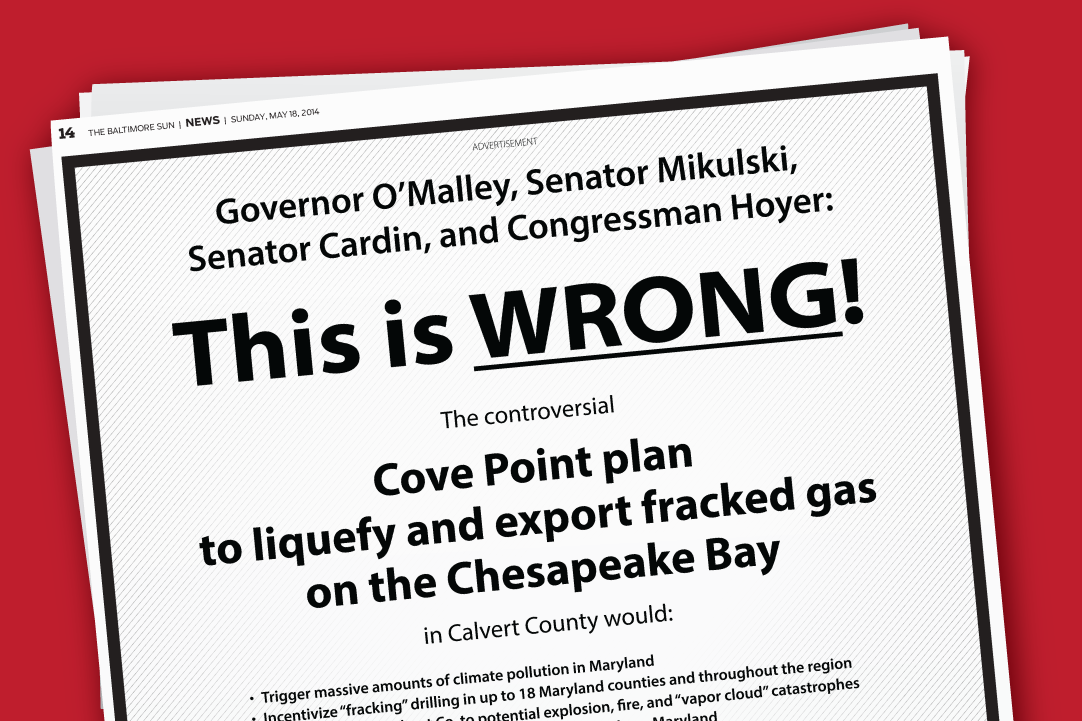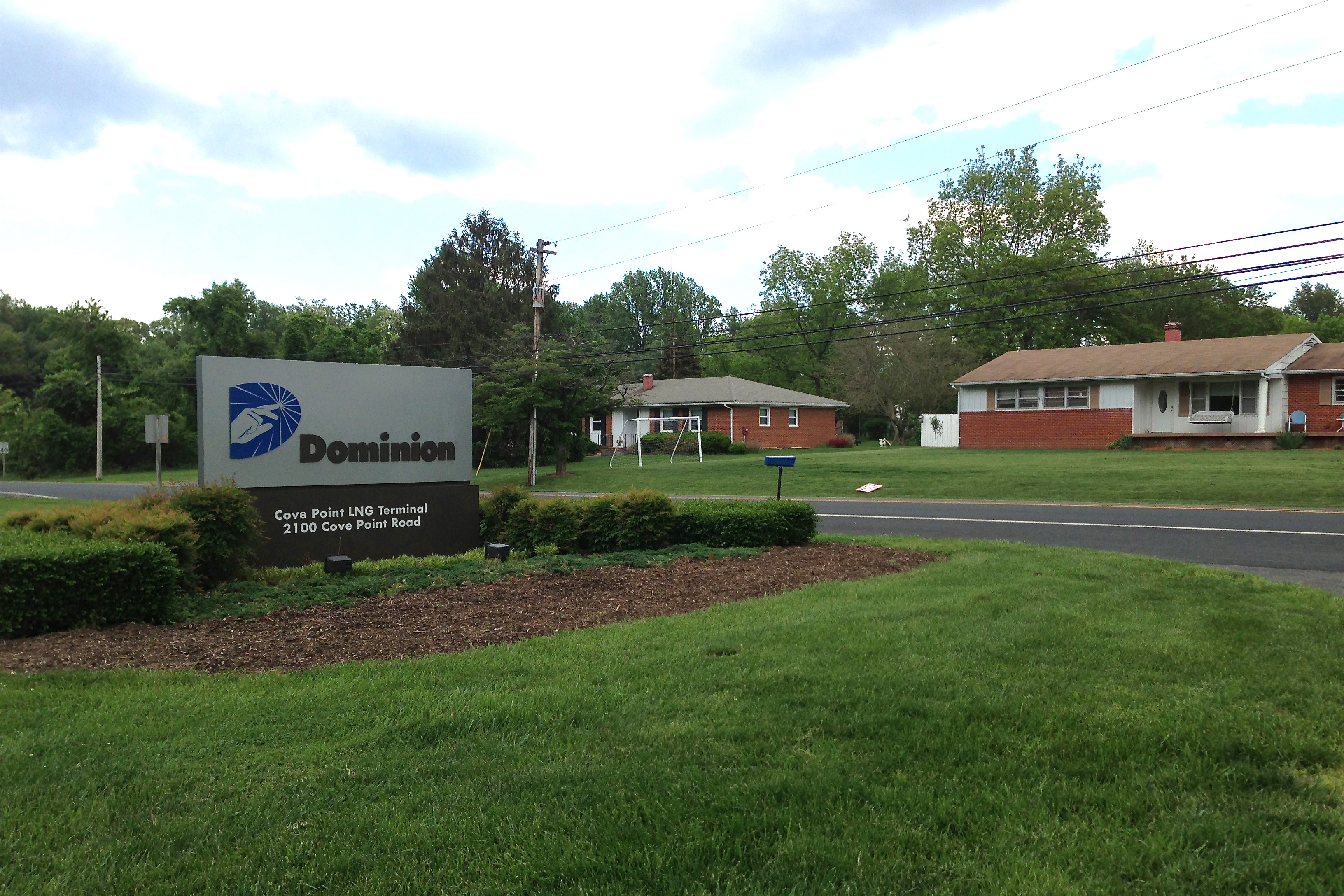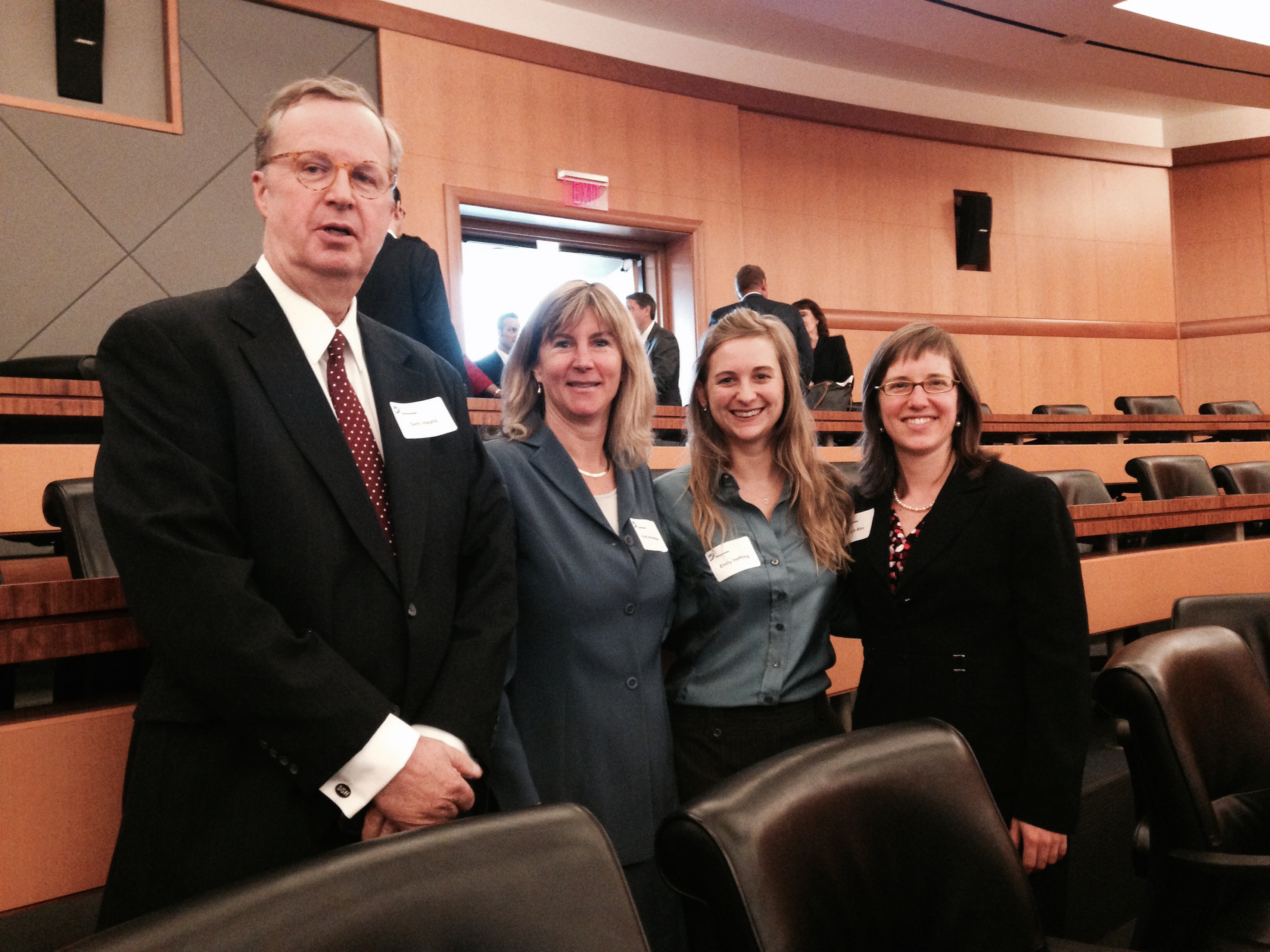The past month has been one of the most eventful yet in the fight against Dominion Resources’ proposed Cove Point fracked gas export facility. To help you stay informed as the urgency picks up, here’s a timeline of the important events and some of the media coverage this fight has seen recently.
May 6th: CCAN and Dominion shareholders file SEC complaint over failure to disclose potential investor risks in Cove Point.
On the eve of Dominion’s shareholder meeting in Cleveland, Ohio, (the site of a catastrophic natural gas explosion that killed over 200 people in 1944,) a Dominion shareholder and environmental advocates submitted an official complaint to the U.S. Securities and Exchange Commission (SEC) detailing how Dominion Midstream, a new gas export subsidiary of the larger Dominion Resources, has potentially omitted or inadequately disclosed significant financial and environmental risks of its proposed liquefied natural gas export terminal.
Learn more about the SEC filing:
- The Daily Record reported on the filing, pointing out that “Dominion was expected to begin construction of the facility during the first quarter of this year, but that has already been delayed.”
- CCAN director Mike Tidwell published a piece in the Cleveland Plain Dealer detailing the risks inherent in such a project.
May 15th: The Federal Energy Regulatory Commission (FERC) Released its Environmental Assessment (EA) of the Cove Point project.
After failing to consider a number of critical factors, the EA found that Cove Point would have “no significant environmental impact.” Immediately, Dominion celebrated the release of such an inadequate study that ignored local safety impacts of the project as well as fracking impacts and life cycle climate pollution.
Learn more about FERC’s inadequate EA:
- Why is the EA totally deficient? Check out CCAN’s Fact Sheet.
- Baynet quotes CCAN director Mike Tidwell on why we need a full Environmental Impact Statement for Cove Point
- DC Media Group reports that FERC Report on Cove Point Misses Big Picture with its Cove Point EA.
- Even oilprice.com asks if it’s the Wrong Time For This Natgas Project. –
- The Nation wants you to take action: Want to do something about Climate Change? Stop Cove Point.
May 18th: This ad runs in the Baltimore Sun, calling on Maryland’s legislators to demand accountability on the proposed Cove Point project.
May 21st: Members of Congress and Cove Point opponents request public comment period extension from FERC
A coalition of faith, health, and environmental groups came together to ask FERC for an additional 60 days to submit public comments on the Environmental Assessment, bringing the end of the comment period to August 13th. Senators Cardin and Mikulski also joined the call for an extension.
Learn more about the request for an extended comment period:
- Reuters reported that U.S. groups seek more time to comment on Dominion LNG export project
- The Calvert Recorder published Group files for FERC comment period extension on LNG project
May 22nd: Activists around the state visit Senators Mikulski and Cardin’s offices, calling on them to stand with Maryland and demand a full Environmental Impact Statement.
At each of Senators Cardin and Mikulski’s offices, activists assembled to speak with staffers and deliver a letter to the Senators detailing why Cove Point needs a more detailed environmental study and a full safety review.
Learn more about the action at the Senators’ offices:
- The Appalachian Independent covered the story of Frostburg State University students calling on the senators.
- Read CCAN’s press release about the day of action.
May 29th: U.S. Department of Energy (DOE) Issues Report Showing that natural gas is worse for the climate than coal when exported to Asia.
According to DOE’s own report, the “results show that US LNG is nearly as bad as coal when exported to Europe and worse than coal when exported to Asia when the climate impacts of methane leakage are measured over a 20-year timeframe.”
Learn more about the DOE report:
- Read CCAN’s summary of the DOE report and its implications
- ClimateProgress broke the news that LNG has no climate benefits now, if ever.
May 30th: The Maryland Public Service Commission delivered its decision about key permits for Cove Point.
The PSC granted Dominion a “Certificate of Public Necessity” for Cove Point that is contingent on the final decision from federal regulators and other conditions. In its report, the PSC noted that Dominion’s project would be a net negative for Maryland’s economy and asked the to pay to mitigate those impacts. The PSC asked Dominion to “include more safety and environmental protections for the controversial project, and to donate $48 million to promote clean energy in the state and to help low-income Marylanders pay their power bills.” (Baltimore Sun)
Learn more about the PSC’s decision:
- The Calvert Recorder quotes Mike Tidwell as saying “The PSC expressed concern for the safety of people living closest to the proposed plant but failed to actually protect these people.”
- The Baltimore Sun reports that the PSC “declared that the export terminal would not provide net benefits to state residents.”
May 31st: FERC held its one and only public meeting about Cove Point at Patuxent High School in Lusby, MD.
 At the hearing, which lasted over six hours, 100 people from across Maryland testified. Of those 100, 66 spoke out against the project, and 34 spoke in its favor. Many opponents of the project spoke about the safety risks it poses to local residents. Outside the hearing, opponents built a mock “sound wall” detailing the “air pollutants and carcinogens that Dominion’s proposed plant would routinely or accidentally send from its compound into the lungs of playing children and their parents.” (a tale of two walls) Among those who testified was 13-year-old Katie Murphy who brought tears to the FERC representatives’ eyes, calling on them to stop Cove Point and protect the nearby residents and plants and animals who would be hurt by the proposal. In one of the most notable testimonies of the day, a Dominion supporter began his testimony by calling for a full Environmental Impact Statement, a more detailed study than FERC’s flimsy EA.
At the hearing, which lasted over six hours, 100 people from across Maryland testified. Of those 100, 66 spoke out against the project, and 34 spoke in its favor. Many opponents of the project spoke about the safety risks it poses to local residents. Outside the hearing, opponents built a mock “sound wall” detailing the “air pollutants and carcinogens that Dominion’s proposed plant would routinely or accidentally send from its compound into the lungs of playing children and their parents.” (a tale of two walls) Among those who testified was 13-year-old Katie Murphy who brought tears to the FERC representatives’ eyes, calling on them to stop Cove Point and protect the nearby residents and plants and animals who would be hurt by the proposal. In one of the most notable testimonies of the day, a Dominion supporter began his testimony by calling for a full Environmental Impact Statement, a more detailed study than FERC’s flimsy EA.
Learn more about the FERC public meeting:
- Baynet’s Marty Madden gave background for the meeting and talked about preparations on both sides in his piece, Pros and antis prepare for FERC meeting
- Fox 45 reported that the community is Divided over Cove Point natural gas plan
- Attendees show colors at Cove Point hearing Baynet
- Elisabeth Hoffman’s blog “a tale of two walls” covers the drama of the day.
Sign up to take action!
Thousands of Americans opposed to fracked natural gas exports will gather in Washington DC on July 13th to march on FERC and deliver a strong message: Stop Gas Exports and Stop Cove Point. Sign up here to join the biggest action yet in this fight.











